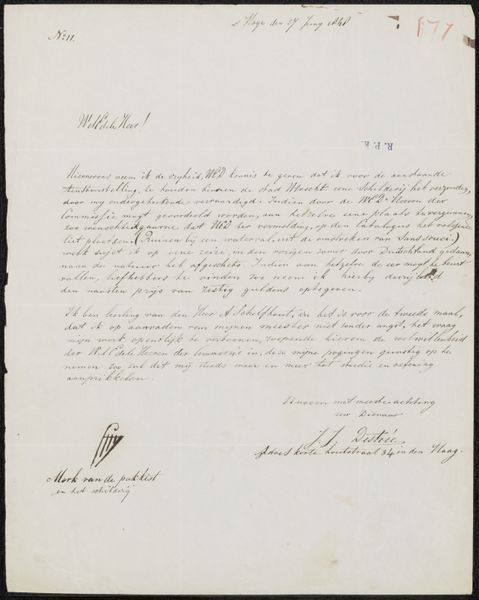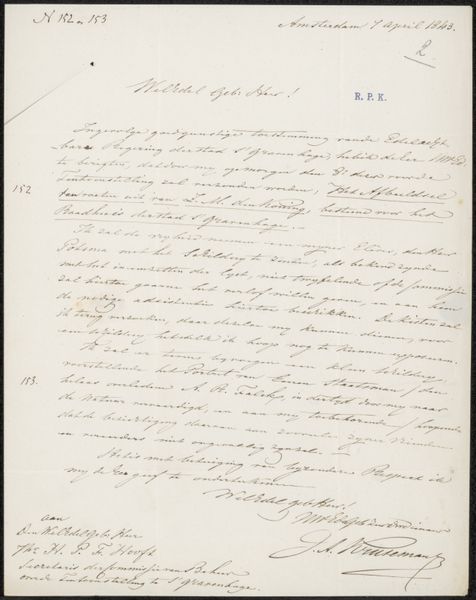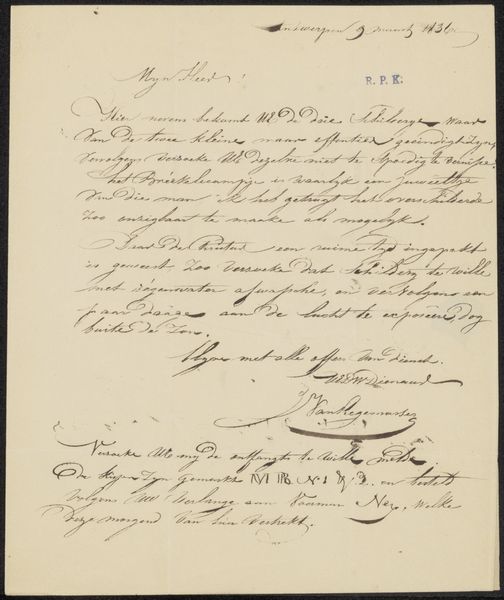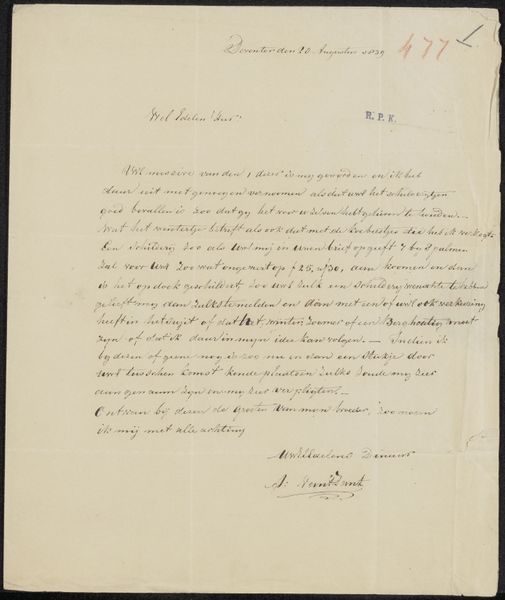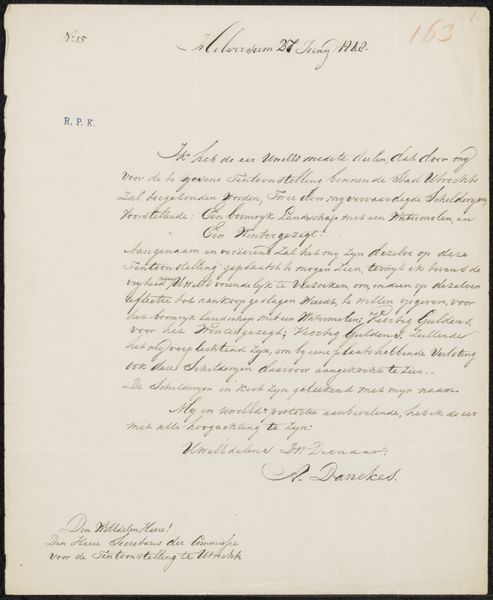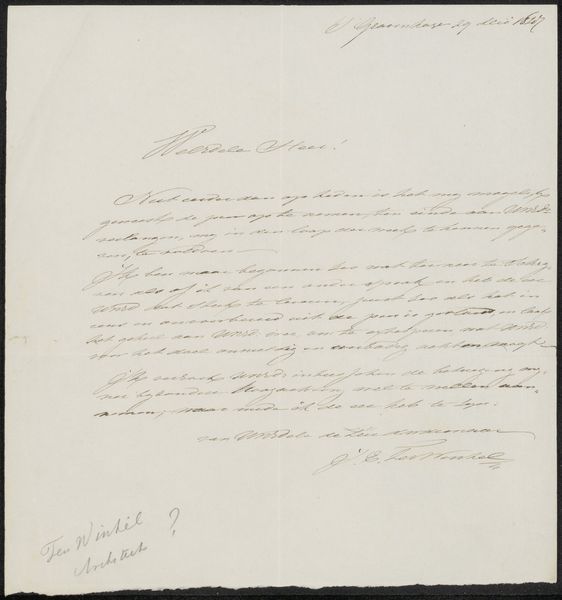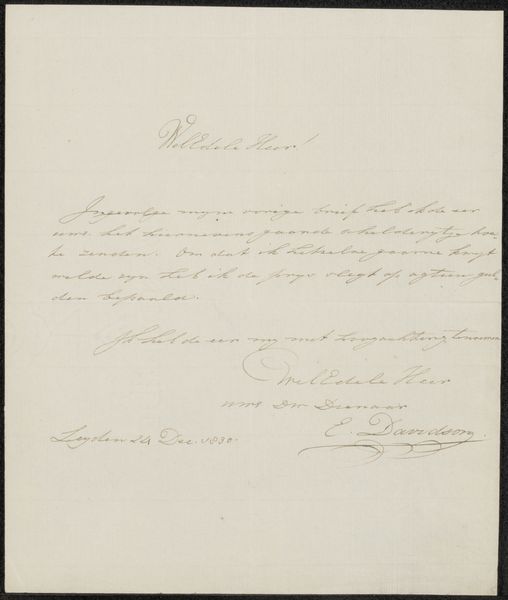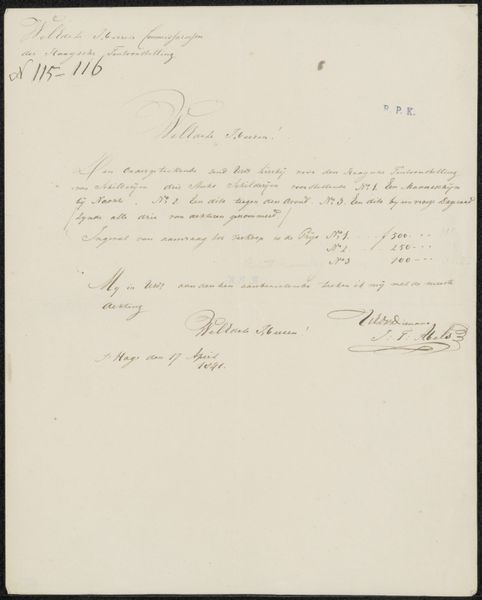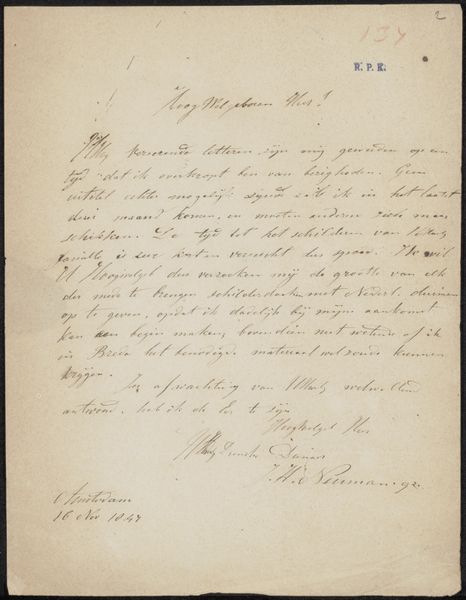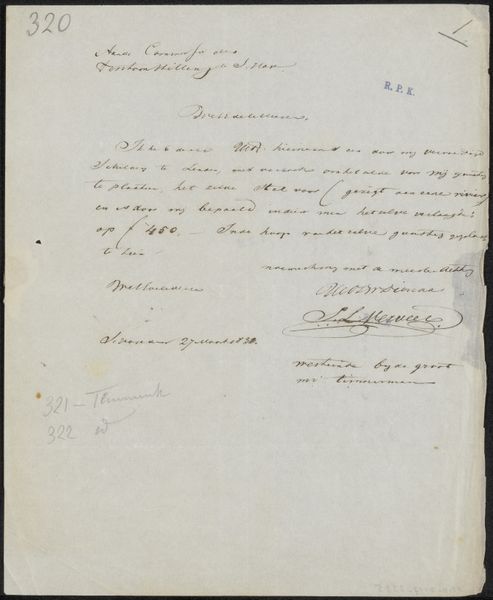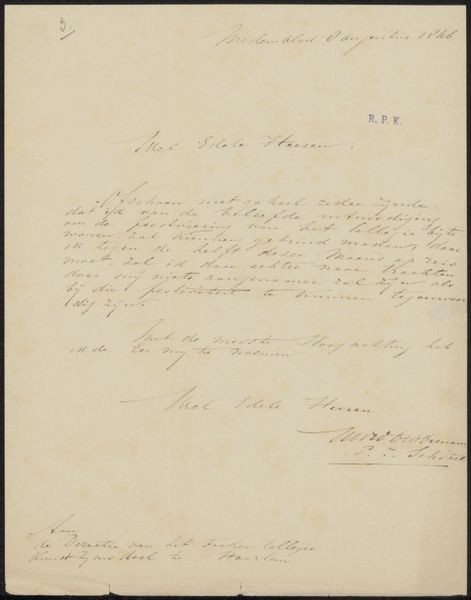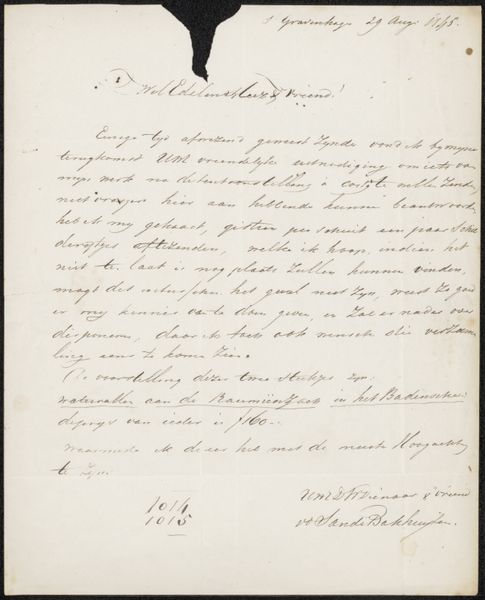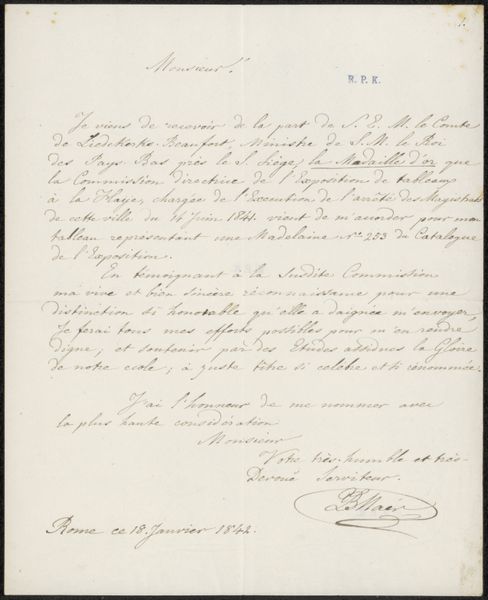
drawing, paper, ink, pen
#
portrait
#
drawing
#
paper
#
ink
#
pen
Copyright: Rijks Museum: Open Domain
Curator: This captivating letter, "Brief aan anoniem," meaning "Letter to Anonymous," possibly from 1816, penned by Petronella van Woensel using pen and ink on paper, strikes me with its delicate, almost secretive nature. It's quite small. Editor: It definitely evokes a sense of intimacy and formality intertwined. The looping script, almost calligraphic, hints at a specific societal expectation, but I am left to question the intent behind choosing to keep the addressee a mystery. It seems charged with untold social and political implications. Curator: Exactly. Van Woensel was a woman in a male-dominated art world. Considering the period, this could be a plea for something; an expression of personal frustration masked by elaborate courtesy. Editor: Right, and this isn't merely a personal missive. Even correspondence has public roles and power dynamics woven into it. The elaborate address—the repeated "Well Beloved Sir"—immediately sets the tone of the interaction. I imagine that would situate Van Woensel within the constraints of proper decorum while possibly also negotiating influence or appealing to their benevolence, and the fact that it's not complete nor received highlights women’s writing in public and in art during this time. Curator: Certainly, she is performing a delicate dance. This drawing, this letter, becomes more than just a document. The aesthetic quality of the penmanship also elevated letter-writing into art, which gives agency to female voices and provides opportunities to build community. It speaks to resilience, persistence, and subtle resistance to the patriarchy. Editor: And by leaving the recipient nameless, the message becomes universal. Anyone facing injustice or seeking a voice could relate. Perhaps the 'anonymous' becomes symbolic of all marginalized voices during that time. I wonder, how can these forms of creative expressions build collectivity that still resonates in society today? Curator: Looking closely, what first struck me as secretive is perhaps also, as you suggested, strength and strategic defiance. Editor: It shifts our interpretation entirely. The art history allows us to explore a narrative where private writings act as expressions of social resistance to explore beyond just individual interpretations. Curator: Beautifully articulated. It reveals just how crucial historical context is for understanding not just art, but social change.
Comments
No comments
Be the first to comment and join the conversation on the ultimate creative platform.
